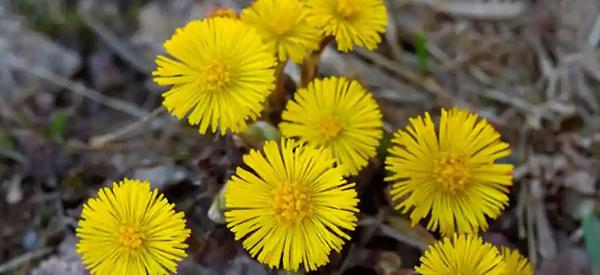
Coltsfoot
Coltsfoot (Tussilago farfara) is a perennial herb with heart-shaped leaves, which resemble a horse’s foot. It bears golden dandelion-like flowers that die before its leaves appear. That is why it is also called Filius ante patrem, which in Latin means “the son before the father.” Coltsfoot is one of the respected herbs that dates back to ancient times and is well-used in French apothecary.
The plant has long been used to remedy cough, sore throat, and common colds. Aside from its medicinal value, coltsfoot also has a culinary purpose. Its dried and burnt leaves make a good salt substitute. It also has edible leaves, flowers, and buds that can be consumed raw, cooked, added to salads, or mixed into pancakes. Coltsfoot extract finds its way into confectionery, providing a sweet flavor to candies.
The coltsfoot plant is native to Eurasia thriving in the northern parts of Africa, India, Nepal, Morocco, and China. It was introduced to North America by early European settlers, presumed for its medicinal value. It spread throughout the Northeastern United States, invading moist and partly shaded areas.
⇒ The Complete Map of Edible Plants: Find Out What You Have in Your Area! (Video)
How To Identify Coltsfoot
Considered an invasive weed, coltsfoot thrives in most arable and open areas. It is recognizable by its horseshoe-like leaves and yellow florets. Its flowers emerge in early spring with a head that closes at night and on cloudy or rainy days.
- Leaves. Coltsfoot leaves develop after the flowers grow in a basal rosette form.
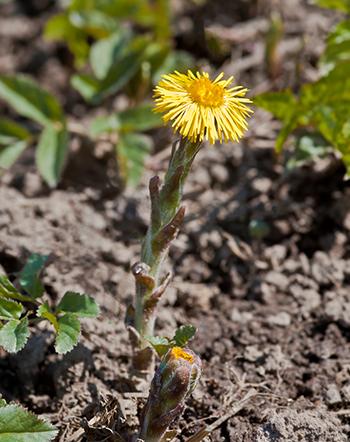 It has a long petiole, is heart-shaped, and measures about 5 to 20 cm long. Each leaf is slightly-toothed and upright. It is green in color with a waxy top and wool-like hairy underside.
It has a long petiole, is heart-shaped, and measures about 5 to 20 cm long. Each leaf is slightly-toothed and upright. It is green in color with a waxy top and wool-like hairy underside.
- Flowers. The golden flowers of coltsfoot appear as a disc with yellow ray florets. The disc florets are sterile, while the surrounding ray florets are fertile. It is surrounded by involuntary bracts making it look like small dandelions.
- Fruits and Seeds. Coltsfoot has white and fluffy seed heads or pappus made of very fine hairs that are either white or off-white. They have small nutlets or ovary that measures only about 3 to 4 mm.
- Roots. Coltsfoot spread through its extensive underground rhizomes. The primary taproot grows and develops before the leaves appear, and dies after the plant’s germination. But, its adventitious roots will form from the first nodes of the stem and grow a new patch. The roots can develop up to 20 cm deep with a dense stand above the surface.Stem. The stem that grows the flower has woolly hairs and purplish scaly bracts. It is circular with lots of small angles and can grow from 5 to 30 cm tall. These stems are covered with a waxy film that can be removed easily by hand.
⇒ What You Must Do Immediately After Identifying Coltsfoot (Video)
Tussilago farfara is one of the herbs of the Asteraceae or daisy family. The name Tussilago came from the Latin word tussis meaning cough, and ago which means to cast it out. Coltsfoot is the only specie in the Tussilago genus since two dozen of its former species were reclassified in different genera.
Coltsfoot does not have any known varieties and related species. It is known in other common names like the Tash plant, Ass’s foot, Bull’s foot, Foals-foot, Foalswort, Fieldhove, and Donnhove.
How To Grow Coltsfoot
Coltsfoot is an extensive grower that spreads either clonally or through its fluffy seeds. They often thrive in shady and moist locations, filling roadside drainage and ditches. Although the plant has little economic value, it is a potent cure for many lung-related ailments. Thus, some gardens still grow the plant as a handy herb for treating coughs and colds.
Coltsfoot is full frost hardy that can survive temperatures down to -15⁰C (5⁰F). They proliferate better in USDA zones 4 to 8.
Existing coltsfoot plants are massive spreaders as the wind can carry them as far as 8 miles. Its creeping rhizomes can also grow a patch quickly, consisting of about 10 to 20 plants. Coltsfoot sometimes self-pollinate, and are sometimes cross-pollinated by bees and other insects.
Growing Coltsfoot from Seeds
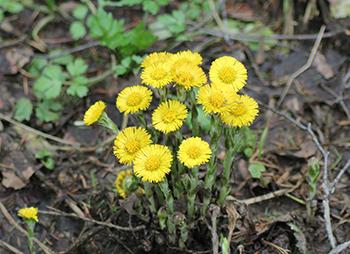 The coltsfoot seeds do not show dormancy and germinate shortly after being dispersed in the same season.
The coltsfoot seeds do not show dormancy and germinate shortly after being dispersed in the same season.
The seeds do not need light to germinate, but it tends to sprout slower in the shade. However, seedling losses can happen when there is a fluctuation in soil moisture.
Coltsfoot is uncomplicated to grow. You can simply sprinkle it in soil and cover them lightly. You can either pre-culture them indoors in March or directly sow them in mid-April. Transplant the coltsfoot in mid-May, preferably in a cooler area of the garden.
Growing Coltsfoot from Rhizomes
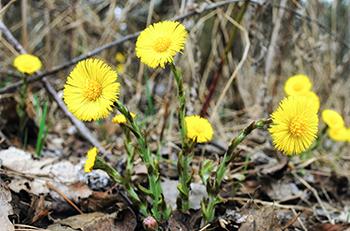 Coltsfoot’s vegetative regeneration is also rapid when its rhizomes are used. These are the rhizomes that grow from the basal leaf axils and form aerial shoots.
Coltsfoot’s vegetative regeneration is also rapid when its rhizomes are used. These are the rhizomes that grow from the basal leaf axils and form aerial shoots.
Unlike the seeds, coltsfoot rhizomes can remain dormant under the soil and start spreading. However, the roots are susceptible to drying when exposed to sunlight. Its growth and propagation are also as uncomplicated as growing it from seeds.
To grow coltsfoot from rhizomes, remove a thick and fleshy portion of the root. Stick it into moist soil in a cool area of the garden that receives dappled shade. Even fragments of the rhizomes that get in contact with soil can readily produce new shoots. It makes the coltsfoot a little harder to eradicate naturally.
⇒ 10 Plants That You Should Never Plant Together (Video)
Plant Care And Management
Coltsfoot is easy to grow, but relatively hard to control. The seeds can disperse for miles and produce new patches. The underground rhizomes can overwhelm the soil in the garden and become hard to contain.
To keep coltsfoot under control, the best way is to keep them from re-seeding in the first place. Remove the flowers and the seeds to exhaust the rhizomes and hoe the unwanted plant off. Using herbicide may also work when hoeing and hand pulling are ineffective in a wide infestation. Herbicides that contain glyphosate are the best for suppressing coltsfoot.
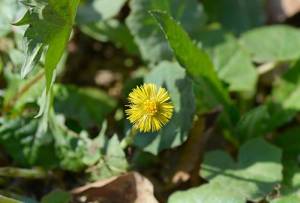
If you want them to proliferate, maintaining the plant is easy as it tends to look after itself. The most viable conditions for them to thrive is an environment with:
- Moist, loamy, and limestone soil
- Partial shade to full sun
- Acid to neutral soil with a pH level between 5 to 8
- Poorly draining soil
- Regular watering
How To Harvest Coltsfoot
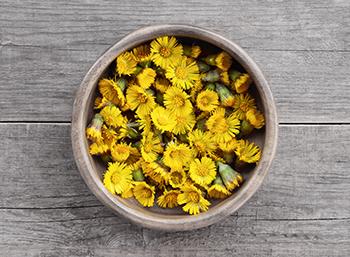 Coltsfoot is best either as a fresh or dried herb. If you want to use fresh coltsfoot, harvest the flowers at the peak of their blooming season in early spring. The leaves that appear after the bloom are also ideal for harvest in late spring.
Coltsfoot is best either as a fresh or dried herb. If you want to use fresh coltsfoot, harvest the flowers at the peak of their blooming season in early spring. The leaves that appear after the bloom are also ideal for harvest in late spring.
Green and healthy leaves are best for cooking and infusion. If you want to extract coltsfoot for tincture, the ideal leaves are those with black spots on the surface. The dots indicate oil content and are actually a sign that the plant is ready for harvest.
Clean the coltsfoot flowers or leaves and air dry them thoroughly. Store it in a dry and dark cupboard and they will keep their potency for at least a year.
What Coltsfoot Is Good For And Natural Remedies Made From It
The most relevant use of coltsfoot in medicine is in the treatment of cough, pneumonia, bronchitis, and other respiratory issues. It is an effective expectorant that detoxifies the lungs and cures its disorders. It is also a demulcent that relieves inflammation and irritation by forming a protective film in the mucosal membrane. Coltsfoot can clear blocked airways and prevent the irritation of the linings of the lungs. It effectively clears the congestion treating the giddiness and lightheadedness that comes with it.
For people who smoke, tar is the primary source of chest congestion that decreases the efficiency and functioning of the lungs. Traditionally, coltsfoot is used as a medicinal cigarette to relieve throat irritation and asthma in smokers.
Coltsfoot contains flavonoids that exhibit excellent antioxidant properties. Its value in folk medicine is the gateway for many research studies aiming to investigate its phytochemistry. Scientists hope to eventually discover the effectiveness of coltsfoot against many types of cancer.
The wide use of coltsfoot is not only limited to the regions of the lungs. It is also used in treating gastrointestinal problems and skin infections. When used as a poultice, coltsfoot can soothe skin problems like eczema, insect bites, sores, ulcers, and inflammations.
⇒ Stop Spending Money At The Pharmacy By Growing These 10 Plants (Video)
Generally, coltsfoot is used to relieve many health issues like:
- Respiratory problems
- Gastrointestinal ailments
- Skin problems

- Ulcers
- Inflammations
- Lung cancer symptoms
- Eye inflammation
The notable pharmacological activities of coltsfoot are:
- Anti-inflammatory
- Anti-oxidative
- Anti-microbial
- Anti-diabetic
- Neuro-protection
- Platelet anti-aggregation
- Anti-cancer
What Parts Of Coltsfoot Are Used For Remedies?
Coltsfoot leaves and flowers are the most essential parts of the plant used for medicinal purposes. It can be used fresh or dried as an infusion for various health issues. In folk medicine, dried leaves of the coltsfoot are used for treating chest congestion in the form of tea.
The plant’s flower bud is used in a processed honey-fry form to make use of its detoxifying effect.
In many countries, coltsfoot is sold as a dietary supplement or tea. It is available in liquid extract, tincture, tablet, and capsule.
The smoke of coltsfoot is also a helpful treatment. The plant is burned and its smoke is wafted and inhaled to relieve chest congestion and cough. Smoke from its leaf blends can also purify the air by removing harmful microbes and pathogens.
Homemade Coltsfoot-Thyme Cough Syrup
Ingredients:
- A handful of fresh thyme sprigs (1 tbsp if using dried)
- 3 tbsp dried coltsfoot
- 2 to 3 thin slices of ginger root
- 2 cups of water
- ½ cup raw honey
- ½ lemon cut into wedges
Steps:
- In a jar, place the cut lemon and cover it with honey to draw out the liquids.

- In a saucepan, toss the thyme, coltsfoot, and ginger and cover them with water. Bring to a gentle simmer until the water is reduced to half.

- Strain the infusion into the prepared jar, cap it, and shake well.

- Label and store the homemade coltsfoot-thyme cough syrup in a refrigerator where it can last for a month.

⇒ A Simple “At-Home” Protocol for the Flu and Other Respiratory Issues (Video)
How to use this remedy:
Take a spoonful of this coltsfoot syrup every 2 to 4 hours until the cough symptoms are relieved. You may then take it every 4 to 6 hours to thoroughly heal the respiratory system and prevent mucus buildup. This cough syrup may exhibit bitterness over time from the lemon pith. But, it is completely safe and normal for oral intake.
Warnings And Cautions:
Coltsfoot is not recommended for pregnant and breastfeeding women. It may cause liver damage and result in infant death. It should not be used in children under six years of age.
People with high blood pressure should avoid using coltsfoot. There are no studies to identify its interaction with medications. But to be safe, avoid taking coltsfoot internally with other herbs and medications to avoid any unwanted effects.
Coltsfoot is not ideal for long-term use and should not exceed three weeks for treating symptoms. The plant contains pyrrolizidine alkaloids that are toxic when taken excessively. The dosage for taking coltsfoot supplements depends on the person’s age and health conditions.
Seek advice from a health professional before taking coltsfoot herbal remedy.
You may also like:
 How to Make Infused Oil for Your Herbal Apothecary
How to Make Infused Oil for Your Herbal Apothecary
Discover The Mysterious Mix Of Herbs That Melts 6Lbs Per Week & Stops Cravings! (Learn More)

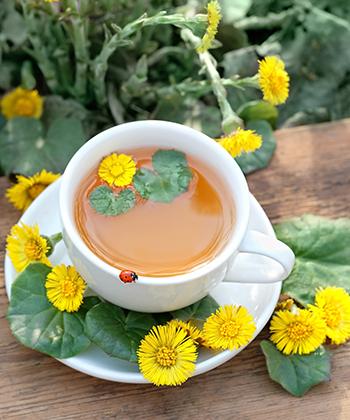
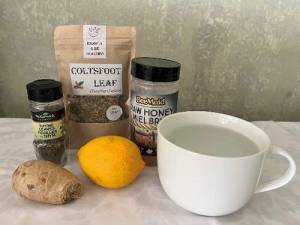
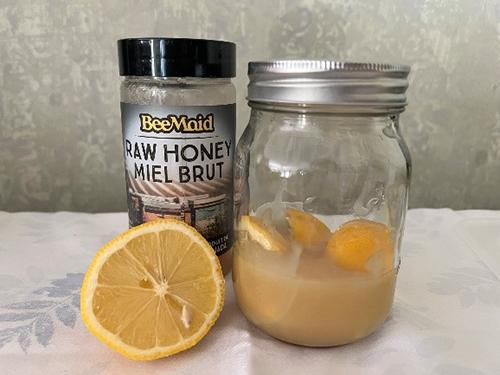
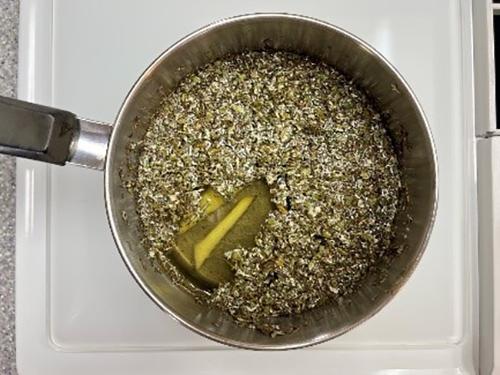
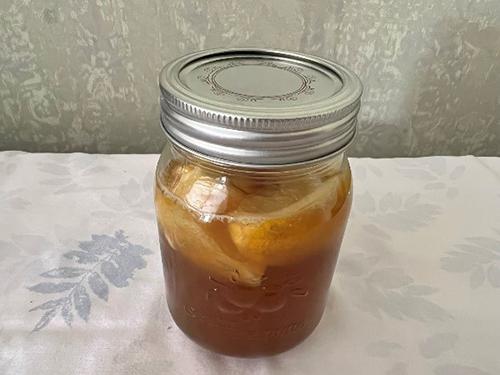
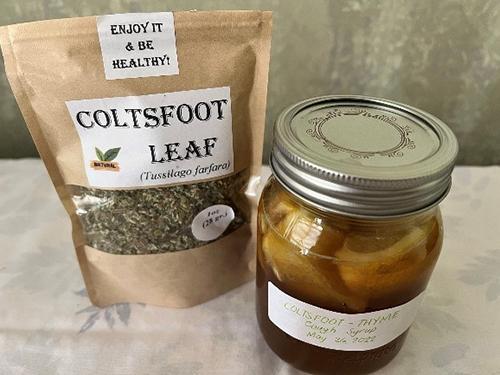
Is this good for COPD lung disease? I’m also on at blood thinner for preventing clots (warfarin). I take Gabapentin for leg nerve damage, and Tylenol #4 for pàin, BCPowder, vitamin C, D3, Quercitin, Zinc and do breathing treatments as needed, with a rescue inhaler as needed . Not able to get out and forage for plants. I’m disabled because of the lung disease and my feet/legs.
I looked for the horse shoe shaped leaves back t didn’t see a picture of it….
Since the leaves do not appear on ntil the blooms are spent….it would be helpful to see them. Thanks
Yes, I agree! The plant flowers so early in the spring and then the flowers are gone when the leaves appear. It would be helpful to have a close up of the plant in mid-summer phase to help identify it.
I thought the same at first, but then noticed the picture toward the end of article with the tea cup and leaves scattered about the tea and saucer. They look like a horses hoof therefore I assumed those were the leaves.
Are you seriously recommending glyphosate in this article? ☠️ Good way to poison everything in the area you spray and make it unfit for medicinal herbs, if you don’t poison yourself along with it.
I totally agree! This blog will not have my support anymore if herbicides like glyphosate are recommended! Completely removes my confidence in the authors.